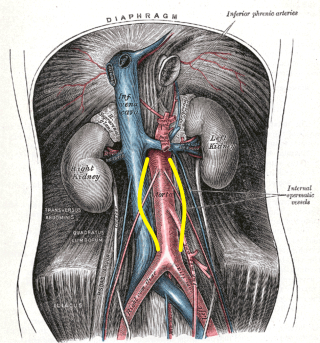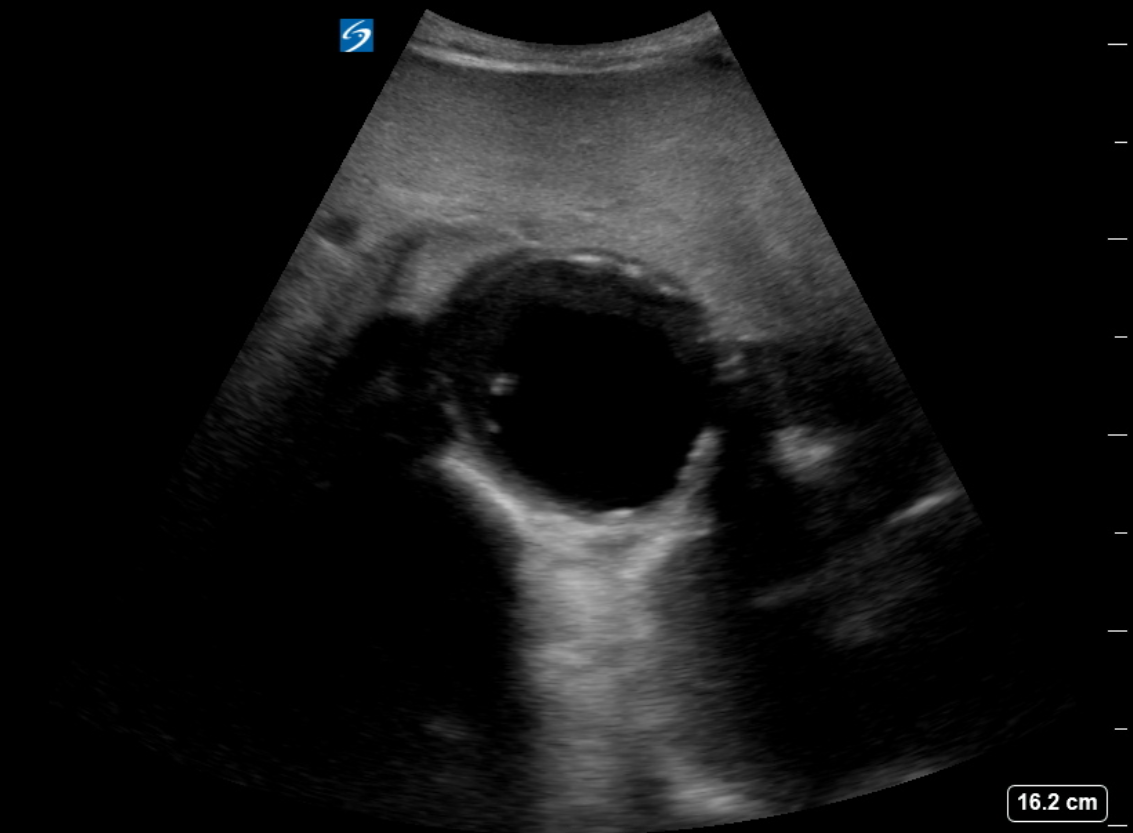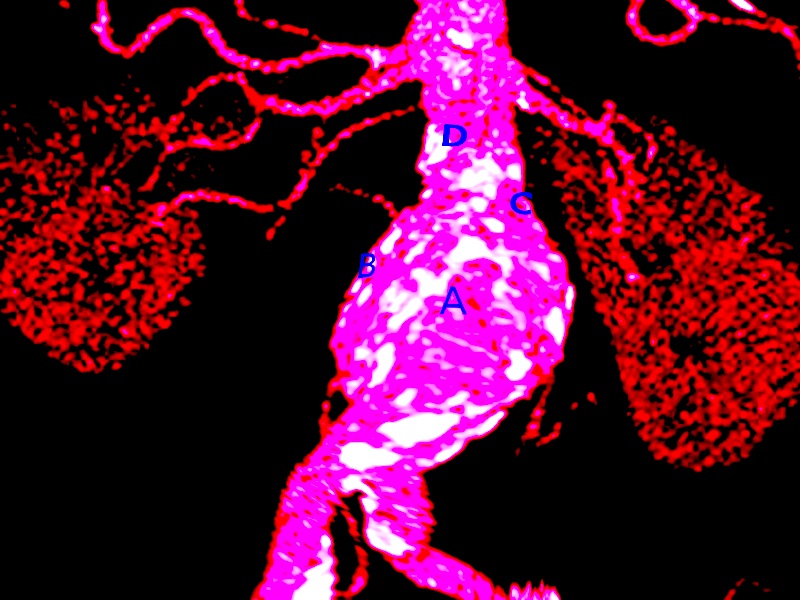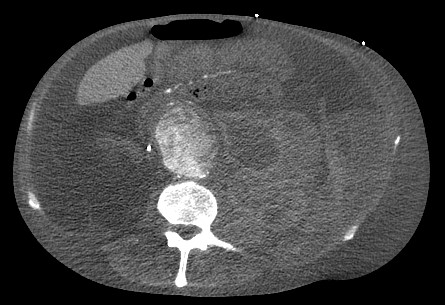[1]
Johnston KW, Rutherford RB, Tilson MD, Shah DM, Hollier L, Stanley JC. Suggested standards for reporting on arterial aneurysms. Subcommittee on Reporting Standards for Arterial Aneurysms, Ad Hoc Committee on Reporting Standards, Society for Vascular Surgery and North American Chapter, International Society for Cardiovascular Surgery. Journal of vascular surgery. 1991 Mar:13(3):452-8 [PubMed PMID: 1999868]
[2]
Powell JT, Sweeting MJ, Brown LC, Gotensparre SM, Fowkes FG, Thompson SG. Systematic review and meta-analysis of growth rates of small abdominal aortic aneurysms. The British journal of surgery. 2011 May:98(5):609-18. doi: 10.1002/bjs.7465. Epub 2011 Mar 17 [PubMed PMID: 21412998]
[3]
Zommorodi S, Leander K, Roy J, Steuer J, Hultgren R. Understanding abdominal aortic aneurysm epidemiology: socioeconomic position affects outcome. Journal of epidemiology and community health. 2018 Oct:72(10):904-910. doi: 10.1136/jech-2018-210644. Epub 2018 Jul 2 [PubMed PMID: 29967003]
[4]
Kent KC, Zwolak RM, Egorova NN, Riles TS, Manganaro A, Moskowitz AJ, Gelijns AC, Greco G. Analysis of risk factors for abdominal aortic aneurysm in a cohort of more than 3 million individuals. Journal of vascular surgery. 2010 Sep:52(3):539-48. doi: 10.1016/j.jvs.2010.05.090. Epub 2010 Jul 13 [PubMed PMID: 20630687]
[5]
Bengtsson H, Bergqvist D, Ekberg O, Janzon L. A population based screening of abdominal aortic aneurysms (AAA). European journal of vascular surgery. 1991 Feb:5(1):53-7 [PubMed PMID: 2009986]
[6]
Xu C, Zarins CK, Glagov S. Aneurysmal and occlusive atherosclerosis of the human abdominal aorta. Journal of vascular surgery. 2001 Jan:33(1):91-6 [PubMed PMID: 11137928]
[7]
Busuttil RW, Abou-Zamzam AM, Machleder HI. Collagenase activity of the human aorta. A comparison of patients with and without abdominal aortic aneurysms. Archives of surgery (Chicago, Ill. : 1960). 1980 Nov:115(11):1373-8 [PubMed PMID: 6254469]
[8]
Busuttil RW, Rinderbriecht H, Flesher A, Carmack C. Elastase activity: the role of elastase in aortic aneurysm formation. The Journal of surgical research. 1982 Mar:32(3):214-7 [PubMed PMID: 6917898]
[9]
Dobrin PB, Baumgartner N, Anidjar S, Chejfec G, Mrkvicka R. Inflammatory aspects of experimental aneurysms. Effect of methylprednisolone and cyclosporine. Annals of the New York Academy of Sciences. 1996 Nov 18:800():74-88 [PubMed PMID: 8958984]
[10]
Cohen JR, Mandell C, Chang JB, Wise L. Elastin metabolism of the infrarenal aorta. Journal of vascular surgery. 1988 Feb:7(2):210-4 [PubMed PMID: 3123716]
[11]
Parry DJ, Al-Barjas HS, Chappell L, Rashid ST, Ariëns RA, Scott DJ. Markers of inflammation in men with small abdominal aortic aneurysm. Journal of vascular surgery. 2010 Jul:52(1):145-51. doi: 10.1016/j.jvs.2010.02.279. Epub [PubMed PMID: 20620767]
[12]
Jiang H, Sasaki T, Jin E, Kuzuya M, Cheng XW. Inflammatory Cells and Proteases in Abdominal Aortic Aneurysm and its Complications. Current drug targets. 2018:19(11):1289-1296. doi: 10.2174/1389450119666180531103458. Epub [PubMed PMID: 29848273]
[13]
Majumder PP, St Jean PL, Ferrell RE, Webster MW, Steed DL. On the inheritance of abdominal aortic aneurysm. American journal of human genetics. 1991 Jan:48(1):164-70 [PubMed PMID: 1985458]
[14]
Tilson MD, Seashore MR. Human genetics of the abdominal aortic aneurysm. Surgery, gynecology & obstetrics. 1984 Feb:158(2):129-32 [PubMed PMID: 6695305]
[16]
Wanhainen A, Verzini F, Van Herzeele I, Allaire E, Bown M, Cohnert T, Dick F, van Herwaarden J, Karkos C, Koelemay M, Kölbel T, Loftus I, Mani K, Melissano G, Powell J, Szeberin Z, Esvs Guidelines Committee, de Borst GJ, Chakfe N, Debus S, Hinchliffe R, Kakkos S, Koncar I, Kolh P, Lindholt JS, de Vega M, Vermassen F, Document Reviewers, Björck M, Cheng S, Dalman R, Davidovic L, Donas K, Earnshaw J, Eckstein HH, Golledge J, Haulon S, Mastracci T, Naylor R, Ricco JB, Verhagen H. Editor's Choice - European Society for Vascular Surgery (ESVS) 2019 Clinical Practice Guidelines on the Management of Abdominal Aorto-iliac Artery Aneurysms. European journal of vascular and endovascular surgery : the official journal of the European Society for Vascular Surgery. 2019 Jan:57(1):8-93. doi: 10.1016/j.ejvs.2018.09.020. Epub 2018 Dec 5 [PubMed PMID: 30528142]
[17]
Jonker LT, de Niet A, Reijnen MMPJ, Tielliu IFJ, Zeebregts CJ. Mid- and Long-Term Outcome of Currently Available Endografts for the Treatment of Infrarenal Abdominal Aortic Aneurysm. Surgical technology international. 2018 Nov 11:33():239-250 [PubMed PMID: 30117134]
[18]
Wang LJ, Prabhakar AM, Kwolek CJ. Current status of the treatment of infrarenal abdominal aortic aneurysms. Cardiovascular diagnosis and therapy. 2018 Apr:8(Suppl 1):S191-S199. doi: 10.21037/cdt.2017.10.01. Epub [PubMed PMID: 29850431]
[19]
Amin S, Schnabel J, Eldergash O, Chavan A. [Endovascular aneurysm repair (EVAR) : Complication management]. Der Radiologe. 2018 Sep:58(9):841-849. doi: 10.1007/s00117-018-0437-x. Epub [PubMed PMID: 30083939]
[20]
Calero A, Illig KA. Overview of aortic aneurysm management in the endovascular era. Seminars in vascular surgery. 2016 Mar:29(1-2):3-17. doi: 10.1053/j.semvascsurg.2016.07.003. Epub 2016 Jul 15 [PubMed PMID: 27823587]
[21]
Mezzetto L, Scorsone L, Silingardi R, Gennai S, Piffaretti G, Mantovani A, Bush RL, Haulon S, Veraldi GF. Bridging Stents in Fenestrated and Branched Endovascular Aneurysm Repair: A Systematic REVIEW. Annals of vascular surgery. 2021 May:73():454-462. doi: 10.1016/j.avsg.2020.10.052. Epub 2021 Jan 5 [PubMed PMID: 33359330]
[22]
Tenorio ER, Oderich GS, Kölbel T, Gargiulo M, Timaran CH, Bertoglio L, Modarai B, Jama K, Eleshra A, Lima GBB, Scott C, Chiesa R, Jakimowicz T, Trans-Atlantic Aortic Research Consortium. Outcomes of off-the-shelf multibranched stent grafts with intentional occlusion of directional branches using endovascular plugs during endovascular repair of complex aortic aneurysms. Journal of vascular surgery. 2022 Apr:75(4):1142-1150.e4. doi: 10.1016/j.jvs.2021.09.050. Epub 2021 Nov 5 [PubMed PMID: 34748899]
[23]
Soler R, Bartoli MA, Faries C, Mancini J, Sarlon-Bartoli G, Haulon S, Magnan PE. Fenestrated endovascular aneurysm repair and open surgical repair for the treatment of juxtarenal aortic aneurysms. Journal of vascular surgery. 2019 Sep:70(3):683-690. doi: 10.1016/j.jvs.2018.11.041. Epub 2019 Mar 6 [PubMed PMID: 30850294]
[24]
Oderich GS, Farber MA, Schneider D, Makaroun M, Sanchez LA, Schanzer A, Beck AW, Starnes BW, Fillinger M, Tenorio ER, Chen M, Zhou Q, Zenith Fenestrated Study Investigators. Final 5-year results of the United States Zenith Fenestrated prospective multicenter study for juxtarenal abdominal aortic aneurysms. Journal of vascular surgery. 2021 Apr:73(4):1128-1138.e2. doi: 10.1016/j.jvs.2020.08.128. Epub 2020 Sep 3 [PubMed PMID: 32891806]
[25]
Eldrup-Jorgensen J, Kraiss LW, Chaikof EL, Neal D, Forbes TL. Vascular Quality Initiative assessment of compliance with Society for Vascular Surgery clinical practice guidelines on the care of patients with abdominal aortic aneurysm. Journal of vascular surgery. 2020 Sep:72(3):874-885. doi: 10.1016/j.jvs.2019.10.097. Epub 2020 Jan 20 [PubMed PMID: 31973949]
[26]
Azhar B, Patel SR, Holt PJ, Hinchliffe RJ, Thompson MM, Karthikesalingam A. Misdiagnosis of ruptured abdominal aortic aneurysm: systematic review and meta-analysis. Journal of endovascular therapy : an official journal of the International Society of Endovascular Specialists. 2014 Aug:21(4):568-75. doi: 10.1583/13-4626MR.1. Epub [PubMed PMID: 25101588]
[27]
Johansen K, Kohler TR, Nicholls SC, Zierler RE, Clowes AW, Kazmers A. Ruptured abdominal aortic aneurysm: the Harborview experience. Journal of vascular surgery. 1991 Feb:13(2):240-5; discussion 245-7 [PubMed PMID: 1990165]
[28]
Chaikof EL, Dalman RL, Eskandari MK, Jackson BM, Lee WA, Mansour MA, Mastracci TM, Mell M, Murad MH, Nguyen LL, Oderich GS, Patel MS, Schermerhorn ML, Starnes BW. The Society for Vascular Surgery practice guidelines on the care of patients with an abdominal aortic aneurysm. Journal of vascular surgery. 2018 Jan:67(1):2-77.e2. doi: 10.1016/j.jvs.2017.10.044. Epub [PubMed PMID: 29268916]
[29]
Myers J, McElrath M, Jaffe A, Smith K, Fonda H, Vu A, Hill B, Dalman R. A randomized trial of exercise training in abdominal aortic aneurysm disease. Medicine and science in sports and exercise. 2014 Jan:46(1):2-9. doi: 10.1249/MSS.0b013e3182a088b8. Epub [PubMed PMID: 23793234]
[30]
Kayssi A, DeBord Smith A, Roche-Nagle G, Nguyen LL. Health-related quality-of-life outcomes after open versus endovascular abdominal aortic aneurysm repair. Journal of vascular surgery. 2015 Aug:62(2):491-8. doi: 10.1016/j.jvs.2015.05.032. Epub [PubMed PMID: 26211382]




